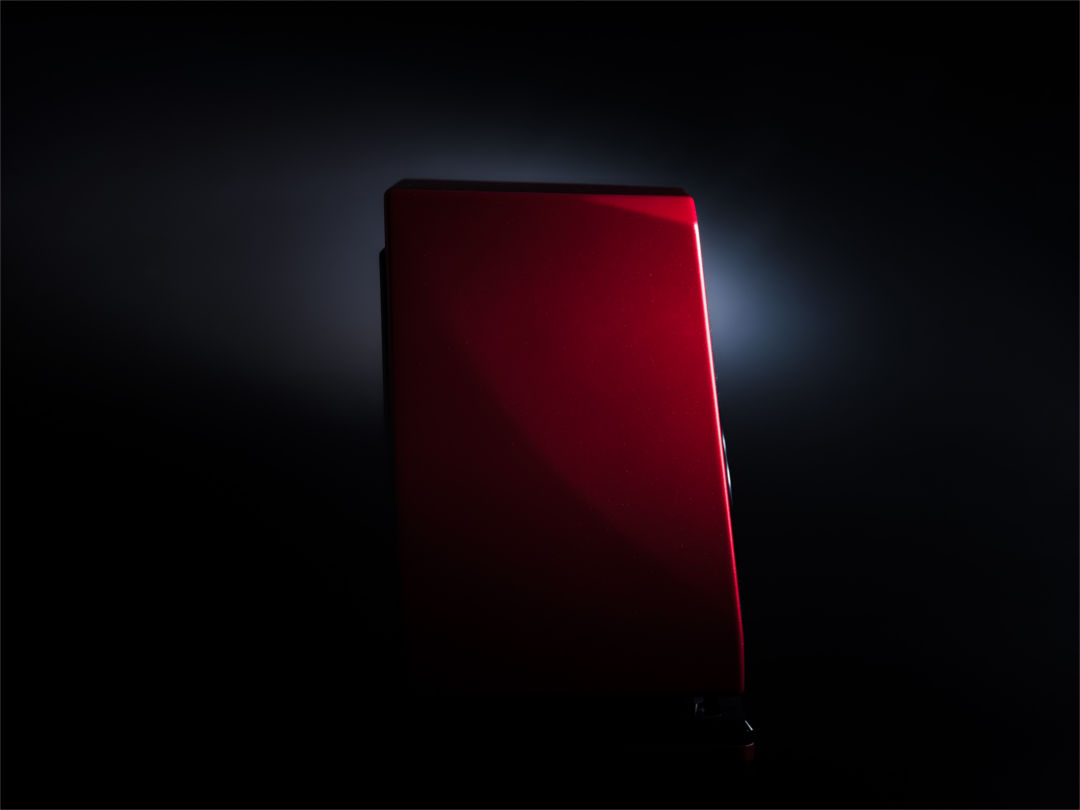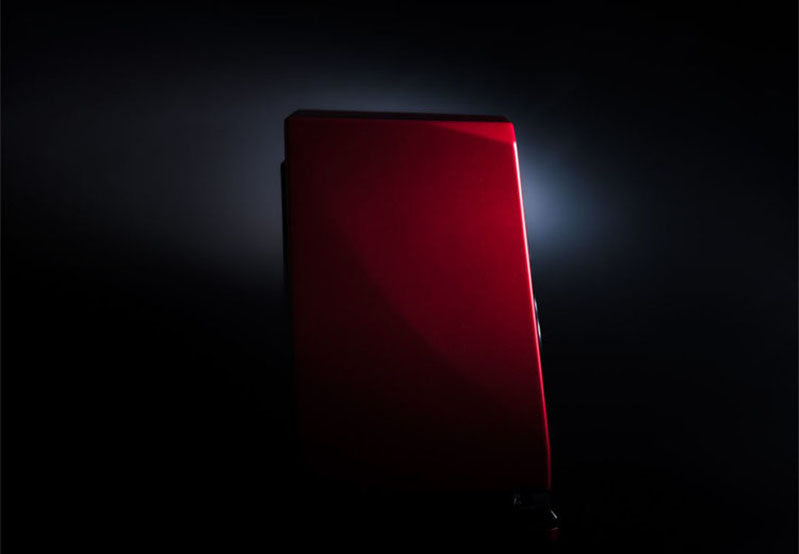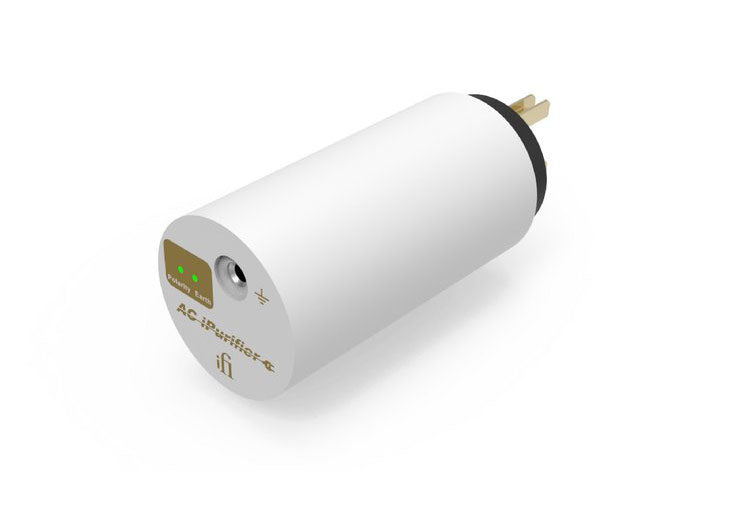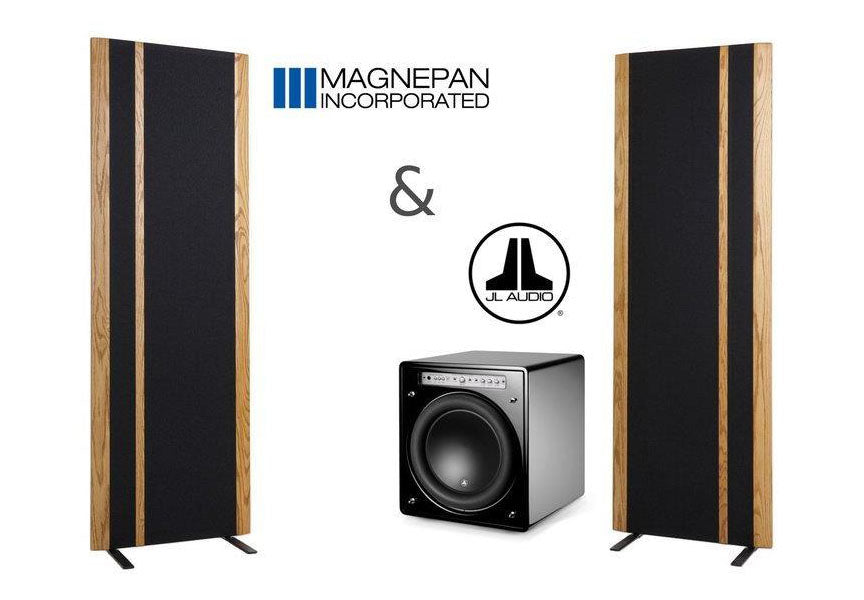Wilson Audio TuneTots – the best bookshelf and desktop speakers

Image by Wilson Audio
I owned one of the first Wilson Audio Tiny Tots in Canada. At the time, I was in University, and could barely afford them. One listen, however, and they captured my heart and my soul. I heard and felt music like I’d never experienced before. No other contemporary speakers disappeared the way the WATT did, leaving behind the pure performance and musical involvement the artists intended. Thus began my 30 year respect and ownership of Wilson speakers.
The Wilson Audio Tune Tots are, in many ways, the latest evolution of the original WATTS which were built as a special application speaker. Dave Wilson had been relying on a well-respected British speaker to monitor his recordings. After one particular session while playing back his master tape on the WAMMS, he realised how inadequate the speaker was, and thus began his work on a proprietary portable monitor. This was how the original WATT was born, designed with the same essential qualities of the WAMM; very high resolution and dynamic expression.
The Tune Tots are the fruits of the factory’s skunkworks team, also known as Wilson Special Applications Engineering. Meant to be placed in hostile environments like bookshelves and desktops, the Tune Tots nonetheless are capable of world class resolution, accuracy, musicality and dynamics. Please read the press release from Wilson Audio for more information.
The Tune Tots are ideal where the speakers have to be located on a bookshelf in a family room, an office desk top or kitchen counter where traditional speakers would sound highly compromised.
If you’d like to hear them, please drop by.
Wilson Audio TuneTot Press Release
Special Applications Engineering is a part of the founding DNA of Wilson Audio. Originally, Wilson used the "special applications" nomenclature to describe products designed to solve a specific problem, such as the Wilson Audio Duette, a loudspeaker that redefined what music lovers and audiophiles believed was possible with near-boundary installations. Now, Wilson Audio Special Application Engineering™ (WSAE) describes an entire line of products, each designed to solve a specific installation challenge.
Arguably, the first Wilson product to be engineered for a special application was the original WATT®. In the mid-eighties, Dave and Sheryl Lee were engaged in producing recordings for their Wilson Audiophile label, the salient goal of which was to create extremely lifelike reproductions of musical events. Dave's reference loudspeaker, the already legendary original Wilson Audio Modular Monitor (WAMM) was, for that time, singularly capable of revealing the dynamic nuance, spatial cues, and the degree of spectral authenticity of the recordings played through them. Unfortunately, when it came to portable loudspeakers Dave could reasonably transport and use to monitor his recordings, he was dependent on commercial products available during that time. All of those he tried fell well short of the resolution and dynamic expression of his big reference loudspeaker. This fact painfully manifested itself after an important recording session. When Dave returned with the master tapes and played them through the WAMM, it quickly become apparent that they were unusable. The location monitors had not revealed the problems in the recording—problems his WAMMs instantly exposed.
Dave immediately began working on an all-new design for a portable monitor. His desire was to endow a small monitor with the same essential qualities of his WAMM. In order to keep his new loudspeaker a reasonable size, Dave intentionally truncated the bandwidth in the bass region. True to his established methodology, Dave approached the new design with a holistic completeness that was unusual during the era—and has remained rare to this day. In order to reduce panel resonances with the cabinet, he employed exotic mineral-filled methacrylate as an enclosure material. He carefully angled the front baffle to optimize time domain performance. He went to great lengths to reduce spurious diffraction introduced by reflections originating on the baffle. His new creation became his reference location monitor for the rest of the series of his audiophile-quality recordings. Recordings revered to this day, and currently available on the Wilson Audiophile label. See the catalogue here.
Dave and Sheryl Lee dubbed the little Wilson the Wilson Audio Tiny Tot (WATT) after the preschool their kids were attending. Since Dave designed the WATT as a tool for his own use, he was completely surprised when audio dealers, audiophiles, and music lovers expressed an interest in purchasing them. Dave never intended to sell the WATTs commercially. Among other factors: the heroic attention to detail and expensive materials meant that the asking price for a pair of WATTs would be far more expensive than anything currently on the market. As a result, Dave was unprepared when the market readily perceived the intrinsic value inherent to the WATT.
In the late eighties, when paired with a dedicated woofer module the Wilsons called the Puppy (a Tiny Tots best friend...), the combination of the two went on to become the best-selling over $10k loudspeaker in audio history.

Image by Wilson Audio
The Smallest Wilson
TuneTot is the latest product from the Wilson Special Applications Engineering™ team. While its name pays homage to the first WSAE product, it is a modern technical tour de force designed to offer the timbral beauty, dynamic nuance, soundstage resolution, and transparency—all the hallmarks of Wilson loudspeakers design culture—but do so in environments which are hostile to all of those qualities.
TuneTot is the smallest and least expensive Wilson, but it would be a mistake to see it as an “entry-level”offering. TuneTots are lovingly fabricated and assembled by the same group of talented craftsmen who build the WAMM Master Chronosonic, using exactly the same processes and techniques. Its cabinet and driver technology are derived directly from Alexx and Sabrina. Finally, each TuneTot that emerges from Wilson is held to the same rigorous, industry-leading manufacturing tolerances as its larger siblings, ensuring each TuneTot is as technically and musically accurate as the reference prototype. You hear precisely what Daryl Wilson heard in the final design.
From the inception of the first Wilson loudspeaker, it always has been understood that the time domain is a critical factor—if musical authenticity is the goal. With TuneTot, the challenge was twofold: Isolating the active loudspeaker from its environment and providing adjustable correction in the time domain. Wilson’s engineers cleverly combined both needs into a single solution. TuneTot utilizes austenitic stainless-steel spike hardware that was designed specifically for TuneTot. The spike system also acts as a mechanical diode, draining unwanted energy out of TuneTot. One of the two pairs of spikes is fully adjustable in terms of length. The adjustable spikes are installed in either the front or the rear of the loudspeaker, depending on the installation height of TuneTot. The adjustability of the spikes changes the rake angle of TuneTot and accurately facilitates time-domain adjustability. Wilson provides precise a simple installation setup technique that allows TuneTot to be corrected in the time domain for each installation.
An Enclosure Only Wilson Could Design
Custom composites have several advantages over single-element materials, such as aluminum. Since composites are constructed from several different constituencies, each element can be uniquely optimized for a variety of design characteristics—such as acoustical damping and rigidity. Performance factors that are mutually exclusive in single-element materials can be individually addressed in composites. Just as is true for all Wilson’s, TuneTot’s enclosure was analyzed and reanalyzed using its state-of-the-art Laser Vibrometry system in order to optimize enclosure-wall thicknesses and the strategic implementation of the proprietary composites. With this precision instrument, WSAE engineers are able to readily detect even the tiniest enclosure vibrations—at the level of billionths of a meter. The process aides the engineers as in their search for the ideal combination and geometry of the composites for the cabinet. TuneTot is constructed from two Wilson proprietary composites—the proven combination of Wilson’s X- and S-material.
Wilson’s engineers didn’t stop there. Perfectly rectangular enclosures are inexpensive and easy to build but suffer from music-destroying internal reflections generated by parallel walls. TuneTot’s enclosure is asymmetrical, ensuring no two internal surfaces are parallel. Inspired by technology from the Alexia Series 2 and the WAMM, TuneTot’s cabinet additionally features a complex internal reflection management system.

Image by Wilson Audio
A New Special Application Ecosystem
TuneTot is but one element within an ecosystem populated with custom, a la carte tools and accessories (purchased separately) designed to maximize TuneTot’s performance and cosmetic beauty in a wide variety of applications.
Environmental music systems are increasingly part of contemporary lifestyles. The Wilson Audio Duette, successfully addressed the challenges caused by near boundary placement. TuneTot builds on that technology. It was designed specifically to be installed on counter tops, bookshelves, desktops and credenzas. In the past, placing a loudspeaker in these acoustically challenging locations has meant accepting serious sonic compromises. Interactions and resonances from the furniture or shelf on which the loudspeaker rests are a source of audible distortion and colorations—deleterious factors most loudspeaker designers simply accept. The Wilson Way™ demanded a new look at the problem.
The Special Applications Engineering team spent several months researching the interactions between TuneTot and the surface upon which it is installed. It quickly became clear that assumptions surrounding environmental resonance control needed to be re-examined. For these installations, the challenges presented are very different from what exists for a typical floor-standing loudspeaker spiked to the floor—problems that require a different strategy. A series of accessories were developed specifically to address furniture-born resonances endemic to these types of installations.
When a loudspeaker is installed on a wood desk or bookshelf, the challenges presented are very different from what exists for a typical floor-standing loudspeaker spiked to the floor—problems that require a different strategy.
When the TuneTot is mounted on a resonant surface, such as a wood desk or sideboard, the ISOBase is ideal. It is an interim platform which is placed between TuneTot and surface below. In this application, the ISOBase dramatically reduces spurious interaction and mechanical resonances generated by the loudspeaker. The ISOBase utilizes a sandwiched series of constrained layers constructed from Wilson’s proven proprietary composites and some newly developed polymers. In these types of installations, a polymer designed to provide optimal damping is the preferred material to interface with the resonant surface below. ISOBase offers unprecedented levels of decoupling and isolation between TuneTot and the structure upon which it rests. It is available in five different paint colors and four metal-hardware choices.
To Each Their Own
Color—expressed through the stunning palette of Wilson’s state-of-the-art WilsonGloss® paint—has long been a source of pride and personal expression among Wilson owners. Wilson has added five new Wilson Gloss colors created specifically for TuneTot: Quartz, Ivory, Crimson, Carbon, and Teak. In addition to Black and Clear, Wilson has added two new anodized-color-finish options for TuneTot’s metal hardware.
Many Wilson owners prefer to listen without the Grille attached. For these installations, Wilson designed the optional TuneTot Ring, which elegantly covers the mounting hardware securing the woofer. The TuneTot Ring is individually milled from 6061-T6 aluminum and is elegantly finished in a choice of four anodized colors. For those listeners who prefer a Grille, one is available for TuneTot. Each low-diffraction frame is milled from solid billets of ultra-low-resonance X-material composite. Acoustically transparent fabric (available in six colors) is meticulously hand stretched onto each composite frame.
As a part of the TuneTot Ecosystem, Wilson is introducing five new paint colors and two new hardware anodized colors (for a total of four) specifically for TuneTot. Owners are able to custom configure their loudspeakers with just the right combination of performance options, paint color choice, and hardware and grille colors based on their individual aesthetic desire and installation needs. Not content with designing a simple “bookshelf” loudspeaker, Wilson’s Special Applications Engineering team has, once again, redefined what is possible for these acoustically hostile installations.

Image by Wilson Audio
Price (U.S. MSRP):
TuneTot—$9,800.00 (pair)
In Upgrade Colors—$10,500.00
ISOBase—$2,100.00 (pair)
TuneTot Ring—$649.00 (pair)
TuneTot Grille—$299.00 (pair)
Availability: In North American Stores May 10th
Wilson Audio, in conjunction with its dealers throughout the United States and Canada, are pleased to announce that, as of May 10, 2018, this important new Wilson product is available for audition and purchase. Participating dealers are currently displaying TuneTot for audition, and many have several colors in stock.


















